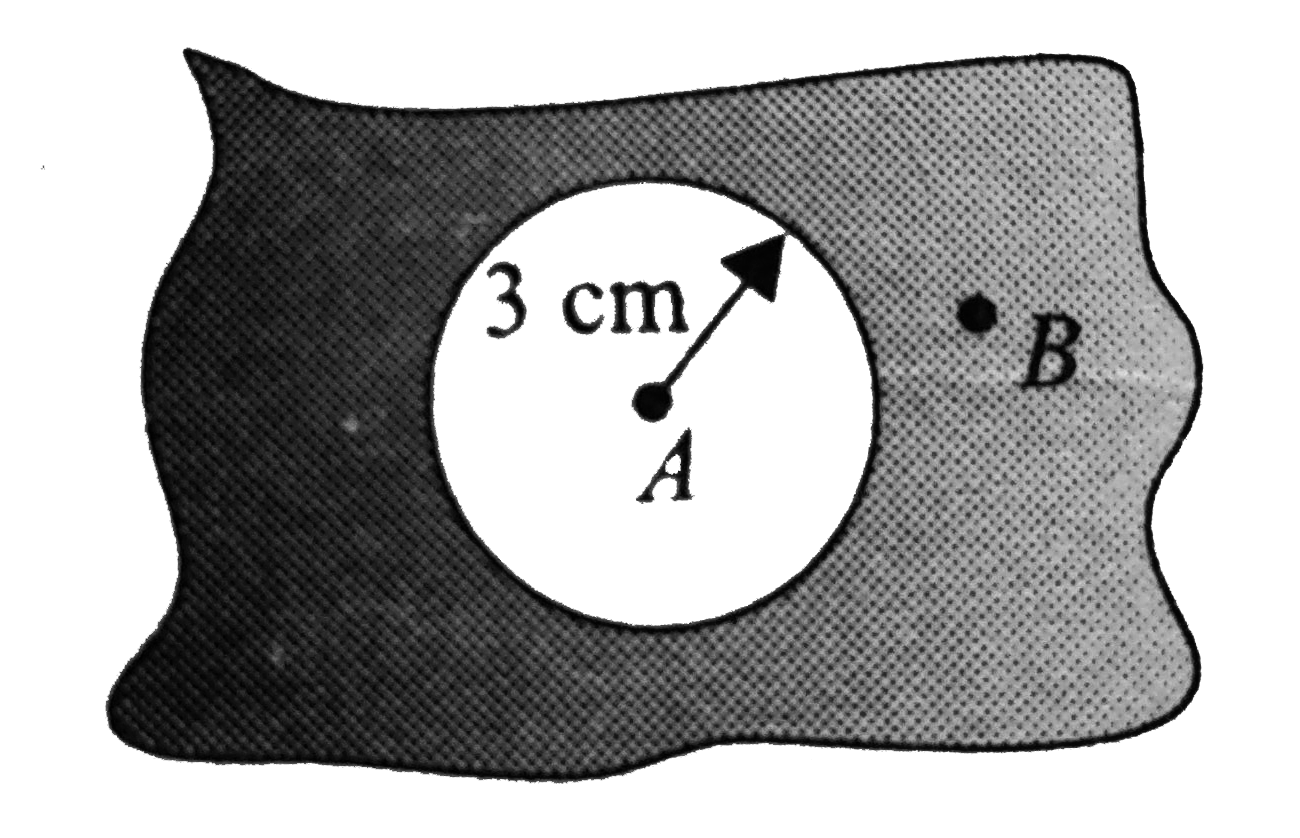A spherical balloon of radius 3 cm containing helium gas has a pressure of 48×10−3 bar . At the same temperature , the pressure , of a spherical balloon of radius 12 cm containing the same amount of gas will be _______ ×10−6 bar
To solve the problem, we will use the ideal gas law and the relationship between pressure and volume for a fixed amount of gas at constant temperature.
1. Understanding the Problem:
We have two spherical balloons filled with helium gas. The first balloon has a radius of 3 cm and a pressure of 48×10−3 bar. We need to find the pressure of a second balloon with a radius of 12 cm, containing the same amount of gas at the same temperature.
2. Using the Ideal Gas Law:
The ideal gas law states that PV=nRT. Since the amount of gas (n) and the temperature (T) are constant, we can use the relation P1V1=P2V2.
3. Calculating the Volumes:
The volume V of a sphere is given by the formula:
V=43πr3
- For the first balloon (radius = 3 cm):
V1=43π(3)3=43π(27)=36πcm3
- For the second balloon (radius = 12 cm):
V2=43π(12)3=43π(1728)=2304πcm3
4. Setting Up the Equation:
Using the relation P1V1=P2V2:
(48×10−3bar)×(36π)=P2×(2304π)
5. Canceling π:
Since π is common in both sides, we can cancel it out:
48×10−3×36=P2×2304
6. Solving for P2:
Rearranging the equation gives:
P2=48×10−3×362304
7. Calculating the Values:
- First, calculate 48×36=1728.
- Now substitute this value:
P2=1728×10−32304
- Simplifying this gives:
P2=17282304×10−3=34×10−3=0.75×10−3bar
8. Converting to Required Units:
To express this in ×10−6 bar:
P2=750×10−6bar
Final Answer:
The pressure of the second balloon is 750×10−6 bar.
We have two spherical balloons filled with helium gas. The first balloon has a radius of 3 cm and a pressure of 48×10−3 bar. We need to find the pressure of a second balloon with a radius of 12 cm, containing the same amount of gas at the same temperature.
The ideal gas law states that PV=nRT. Since the amount of gas (n) and the temperature (T) are constant, we can use the relation P1V1=P2V2.
The volume V of a sphere is given by the formula:
V=43πr3
- For the first balloon (radius = 3 cm):
V1=43π(3)3=43π(27)=36πcm3
- For the second balloon (radius = 12 cm):
V2=43π(12)3=43π(1728)=2304πcm3
Using the relation P1V1=P2V2:
(48×10−3bar)×(36π)=P2×(2304π)
Since π is common in both sides, we can cancel it out:
48×10−3×36=P2×2304
Rearranging the equation gives:
P2=48×10−3×362304
- First, calculate 48×36=1728.
- Now substitute this value:
P2=1728×10−32304
- Simplifying this gives:
P2=17282304×10−3=34×10−3=0.75×10−3bar
To express this in ×10−6 bar:
P2=750×10−6bar
The pressure of the second balloon is 750×10−6 bar.
Topper's Solved these Questions
Similar Questions
Knowledge Check
A balloon contains 1500m3 of helium at 27∘C and 4 atmospheric pressue. The volume of helium at −3∘C themperature and 2 atmospheric pressure will be
A1500m3B1700m3C1900m3D2700m3An inflated rubber balloon contains one mole of an ideal gas has a pressure p, volume V and temperature T. if the temperature rises to 1.1 T, and the volume is increased to 1.05 V, the final pressure will be
A1.1 PBPCless than PDbetween P and 1.1 P.
A spherical vessel of radius r = 5 cm contains hydrogen (H2) at a temperature T=300 K and pressurep=105 Pa. How many molecules collide on the vessel in 1 s ?
View SolutionA spherical drop of water has 2.5 mm radius. If the surface tension of water is 70×10−3 N m−1, then the excess pressure inside the drop is
View SolutionA sample of a given mass of gas at a constant temperature occupies 95cm3 under a pressure of 9.962×104Nm−2. At the same temperature its volume at a pressure of 10.13 xx 10^(4) Nm^(-2) is
View SolutionA spherical body of radius 10cm radiates 300W at 227°C. If the radius is doubled and temperature is remain same, the power radiated will be
View SolutionA spherical drop of water has 1mm radius. If the surface tension of water is 70×10−3N/m, then the difference of pressure between inside and outside of the spherical drop is:
View SolutionAn inflated rubber balloon contains one mole of an ideal gas has a pressure p, volume V and temperature T. if the temperature rises to 1.1 T, and the volume is increased to 1.05 V, the final pressure will be
View Solution

